Shevlin Sebastian's Blog, page 56
April 24, 2018
The Kindness Of Superstars
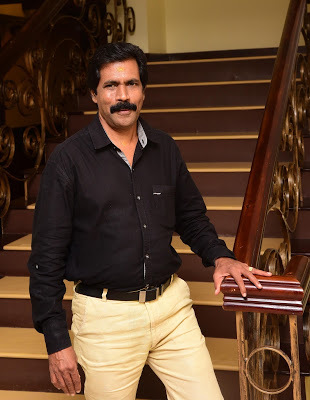
COLUMN: LOCATION DIARY
Production controller Sidhu Panakkal talks about his experiences in the films, 'Appu', 'Ponthan Mada', ‘Ormacheppu’ and ‘Padayani’
Photo by Albin Mathew
By Shevlin Sebastian
For an early morning shoot at Mahabalipuram for the film 'Appu' (1990), Mohanlal set out from Chennai in a Contessa along with a driver. The East Coast road was smooth, the traffic was sparse and they were going at a good speed when suddenly the car experienced engine trouble and sputtered to a stop.
Mohanlal stepped out. He looked up and down the road. There were no vehicles in sight.
Meanwhile, everybody had reached the set but Mohanlal was missing. “There were no mobile phones at that time,” says production controller Sidhu Panakkal. “We stepped out on the road to see whether Mohanlal Sir was coming. But no vehicle came.”
After a few minutes, Sidhu saw a van coming at full speed. It was a production vehicle which was bringing the food for the unit. But suddenly, Sidhu saw a handsome man sitting beside the driver. When the van came up, he realised that it was Mohanlal.
“The driver told us that Mohanlal stopped the vehicle and got on,” says Sidhu. “Most superstars would not have done that. They would have asked for a car to be sent. But thanks to the down-to-earth nature of Mohanlal, he arrived on the set a few minutes late.”
On another occasion, for the film, ‘Akkare Akkare Akkare’ (1990), Sidhu went to Mangalore where Mohanlal was acting a Priyadarshan film to collect his passport and of a few others because there was a schedule in America. When Mohanlal gave the passport to Sidhu, in his hotel room, he asked the latter where he was staying.
“I will take a room in a hotel,” said Sidhu. Immediately
Mohanlal replied that there was no need. “You can stay with me in my room,” he said. A moved Sidhu accepted the offer. “Mohanlal Sir is a superstar but he did not think twice about asking me to share his room even though I was only a production manager at that time,” he says.
Sidhu had a moving experience with another superstar. During the shoot of 'Ponthan Mada' at Kotapara, every day Sidhu would go and collect Mammootty from his hotel in Guruvayur. One day, director TV Chandran told Sidhu to tell Mammootty to shave before coming to the set. But when Sidhu went to meet Mammootty he was all dressed up and ready to go. So they left immediately in the car.
After they travelled quite a distance, Sidhu suddenly remembered that he had forgotten to tell Mammootty that he needed to shave. “Even though we were inside an air-conditioned car, I began perspiring,” says Sidhu. “I did not know what to do.”
When they reached the shooting area, Sidhu walked beside Mammootty and quickly told him about his memory lapse. “Mammootty Sir just stared at me and did not say anything,” says Sidhu.
When Chandran saw Mammootty, he said, “Oh my God, you have not shaved.”Mammootty said, “Sidhu told me to shave but since two days later, I have to act in a scene with a beard, I thought I would keep it.”
Chandran said, “I agree but for this romantic scene, I need you clean-shaven.”
Mammootty nodded and called make-up man Pattanam Rasheed, who, luckily, had a spare razor. “In the end, Mammootty Sir got a shave,” says Sidhu. “And he saved my job.”
But not all experiences are inspirational. In ‘Ormacheppu’ (1998), the location was at Valparai in Tamil Nadu. The shoot, late at night, involving Baburaj and Lal was inside a tea factory. “We placed a light on the road,” says Sidhu.
However, two drunken men came up and said that the crew could not put a light on the road. Soon, they slapped a couple of the team members. But the crew retaliated and beat them up also. In the end, the duo left.
“The local manager informed us that they were dangerous people who belonged to the ruling party,” says Sidhu. “There was a good chance they would return with more men and create havoc. He told us it would be better to leave at once.”
Very quickly, producer Ouseppachan and Sidhu rushed to the hotel. “We collected all the clothes and other items from all the rooms,” says Sidhu. “Then we paid the bill and left.” The entire production moved, at full speed, in the night to Marayoor, 115 kms away.
Thus far, Sidhu has worked in 120 films over 31 years. But his career in Mollywood began rather casually when he went to Chennai in 1986 to try his luck. He stayed at his aunt’s home.
Luckily, Sidhu’s cousin Suresh's friend was Alvin Antony, who was working as a production assistant on Sukumaran’s film, ‘Padayani’. So, Alvin invited Sidhu to come to the set. Soon, he began doing odd jobs.
One day Alvin had to leave for Kerala for some personal reasons. So Sukumaran called Sidhu and asked him to take over. “In fact, Sukumaran Sir asked me to stay at his house in Ashok Nagar which had nine bedrooms,” says Sidhu. “From the beginning, Sukumaran Sir and Mallika Madam treated me like a member of their family,” says Sidhu. “I will always be grateful to them.”
(The New Indian Express, Kochi, Thiruvananthapuram and Kozhikode)
Published on April 24, 2018 23:32
April 23, 2018
High Class And Luxurious
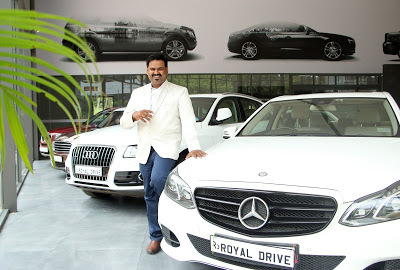
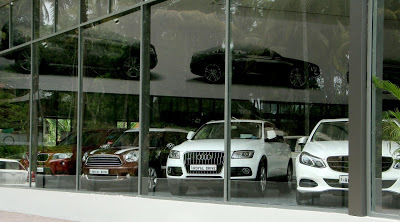
Mujeeb Rahman K talks about his experiences in dealing with pre-owned luxury cars
Photos by TP Sooraj
By Shevlin Sebastian
One day, Mujeeb Rahman K, the chairman and managing director of Royal Drive, which deals in pre-owned luxury cars, stood outside the gate of a bungalow in Kozhikode. The watchman said that there was a dog which was roaming around the compound. “I cannot control it,” said the watchman. “Only Madam can.”
So Mujeeb informed the absent owner, who called the wife. But for some reason, the woman did not come out. In fact, it took her an hour to put the dog back in its cage. “If I was a buyer, I would have walked away without waiting,” he says. “But since this is my business, I have learnt to be patient.”
When he went to the garage, he saw that it was a Mercedes Benz. “Eventually, the deal was done for Rs 60 lakh,” says Mujeeb, while on a recent visit to Kochi.
He says that there are two types of owners. Those who are humble, polite, and hospitable, and those who are arrogant. “In both cases, they might have started from zero and made a lot of money,” says Mujeeb. “But it is mostly individual character traits that determine their behaviour when they become very rich. Whatever be the case, I have to be careful about my behaviour.”
And he needs their patronage as he has just opened a 15,000 sq. ft. showroom in Kozhikode on April 2 to showcase pre-used luxury cars.
Asked about the vehicles on display, he says, “We have the Jaguar, Mini Cooper, Range Rover, Volvo, Porsche, Mercedes Benz, Audi, BMW and the Lexus,” says Mujeeb. “The prices range from Rs 15 lakh to Rs 2 crore.”
The buyers are mostly businessmen, doctors, architects, and Malayali NRIs.
The problem with buying luxury cars is that the depreciation is very high. “So it is always better to sell it off after a couple of years and go for an upgradation,” says Mujeeb.
As for the cars, most are in very good condition. “When the price of the vehicle is very high, people take a lot of care of it,” he says. Mujeeb usually tries to buy a car within three years of the purchase, because it comes within the warranty period and so, servicing and other repairs can be done for free.
To ensure there are no legal or other issues, Mujeeb inspects the Registration Certificate. Then he double-checks it with the Regional Transport Authority, the car company and the insurance firm. “If everything is okay, only then will I take the car, he says.
Asked whether he can detect whether the car has an accident, Mujeeb nods his head. “For example, if the headlight is broken in a 2015 car, usually the date on the new headlight will be a later date, which means, it has been replaced,” he says.
Usually, Mujeeb does not buy cars which have had an accident. “There is a tendency for the car to have another accident because the balance is not there,” he says. “I don't want to pass this problem to the new buyer.”
Hot Bikes
Mujeeb also deals with expensive bikes like Harley Davidson, Triumph, Ducati, and Kawasaki. It ranges from Rs 3.5 lakh to Rs 20 lakh. Harley Davidson's Fat Boy, at Rs 20 lakh and 1750 cc, is one of the most popular. “These bikes have great power,” he says. “But they have been made for temperate climates like America and Europe and not the tropical weather of India.”
The heat from the engine is very hot. “That is why the companies provide a jacket for the rider to wear,” says Mujeeb. “It is very difficult to drive in hot weather. Plus, we don't have good highways in Kerala. Most of the people ride after midnight so that they can have a smooth ride. That is why superbikes are not very popular.”
Customers are usually from the age group of 30 to 50 because only they can afford it. “All of them are in it for the joy of riding,” he says.
It is clear that for Mujeeb bikes and cars are a passion. And he developed this fascination from his childhood. When he was studying in Class 9, in East Koder, Malappuram, his neighbour Dr KT Rabiulla bought a Tata Sierra. “At that time, the Sierra was the first car to have power steering and windows,” says the 39-year-old. “Since Rabiulla Sir knew I had a passion for cars, he called me over. As soon as I entered the house, he gave me the keys and told me to go for a drive in the compound. I was 14 years old. This was a turning point. I loved the feel of the luxury car. And this love remains as strong as ever within me.”
Most Popular Vehicles
Audi Q3 (Rs 20-30 lakh)(Reason: It is a small car)
Mercedes Benz GLE350 (Rs 50-60 lakh)(A SUV, the ride is smooth on Kerala's difficult roads)
Jaguar XF (Rs 25-45 lakh)(Reason: This is a sedan and the design looks good)
Porsche Cayenne (Rs 80 lakhs to Rs 1 crore)(Reason: High brand value)
(The New Indian Express, Kochi, Thiruvananthapuram and Kozhikode)
Published on April 23, 2018 04:04
April 18, 2018
The Wink That Went Viral
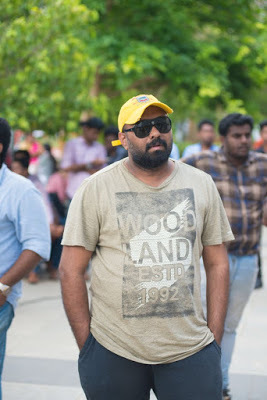
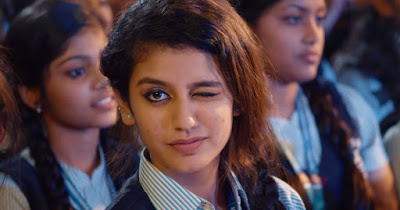
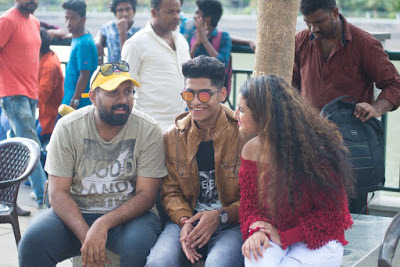
COLUMN: LOCATION DIARY
Director Omar Lulu talks about his experiences in the films, ‘Oru Adaar Love’ and ‘Happy Weddings’
Photos: Omar Lulu; Priya Prakash Varrier; Omar Lulu with Roshan and Priya Prakash Varrier
By Shevlin Sebastian
One evening, director Omar Lulu got a call. It was from his six-year-old son Eshan who lives in Dubai. “Papa, you must take Roshan [Abdul Rahoof, for the yet-to-be-released film 'Oru Adaar Love'],” said Eshan. Omar's son had seen Roshan dance regularly in a TV show and had become a fan.
But when Eshan called, Omar was having doubts about Roshan. “He had not performed well in the audition,” says the Thrissur-based Omar, at a hotel room in Kochi. “What made matters worse was that he had slipped and fallen.”
But Roshan kept sending videos to Omar's Whatsapp account of his dubsmash moves. “When I saw that, I realised that he looked good and performed well,” says Omar. “He also had a cuteness. So I decided to give him a small role.”
Soon, the shoot began at the Don Bosco school at Mannuthy. The first sequence was of Roshan coming down some steps. Omar felt it would be better if a girl also walked down with him. He saw young actor Priya Prakash Varrier walking past.
“So, I asked her to walk down the steps with Roshan,” says Omar. “But when I looked through the monitor, I realised that both of them had a very good chemistry.”
The next sequence was for the song, ‘Manikya Malaraya Poovi’. To give a light-hearted feel, Omar decided that Roshan would do some winks. He had seen Roshan do it in a dubsmash video.
“The initial plan was for Roshan to wink at Priya and she would stare back,” says Omar. “However, when I shot Roshan winking, I asked Priya whether she knew how to wink. She said yes. So, in a sequence when Roshan lifts both his eyebrows, Priya gives a wink.”
When Omar looked through the monitor he felt very excited. He immediately called the producer Ouseppachan and asked to stop the shoot. “I wanted to rework the script, to give more space for Roshan and Priya,” says Omar. The producer, understandably, was upset.
Then Omar said, “Sir, I will release ‘Manikya Malaraya Poovi’ on YouTube and you can see the reaction. Then you will understand.”
Omar’s gut feeling turned out to be right. The song, which was released on February 9, went viral and racked up millions of views, making Roshan and Priya instant stars. In fact, so great was the impact of Priya’s wink, that she now has 5.4 million followers on Instagram, twice more than young superstar Dulquer Salman.
During this time, Omar was browsing through Facebook and came across a boy called Satyajit who sang of friendship and love, without any musical accompaniment. “I liked his voice,” says Omar.
So, he sent a message. But there was no response. At that time, a young actor came to meet Omar. He was from Kottayam where Satyajit lived. A miffed Omar asked the boy, who knew Satyajit, why the singer had not replied. The boy rushed back to Kottayam and brought Satyajit to meet Omar.
The director asked Satyajit whether he had any new songs. The youngster sang a song called ‘Freak Penne’. “It had good lyrics,” says Omar. “So I took Satyajit to [music composer] Shaan Rahman’s house in Kochi. When Satyajit sang Shaan immediately stood up and clapped.”
Later when Shaan sent the music for the song by e-mail, he wrote in the subject line: ‘Sure shot’.
‘Freak Penne’ will be released soon.
Meanwhile, Omar had a different experience in his film, ‘Happy Weddings’ (2016). When he wrote the script, he intended to shoot inside a train. But when he inquired about the cost, it was very high. “We have to deposit money at the station as well as give daily fees,” says Omar. “Since it was my first film the budget was low.”
Omar wondered what to do. One night, he, along with a few crew members were having dinner at a thattukada near a highway in Thrissur.
“Suddenly, I saw a low-floor bus going past,” says Omar. “The bus looked nice, with all the lights inside it. I felt that maybe I could do the shoot in a low-floor bus instead of a train.”
The next morning, when he opened a Malayalam newspaper, there was a feature which mentioned of how the Kerala State Road Transport Corporation was encouraging cinema shoots inside low-floor buses. “This was a sign from God,” says Omar. So, he had no doubt about hiring such a bus for the film.
One day, just before the shoot for ‘Happy Weddings’ began, Omar was again going through Facebook. There was a video, called Rock Sasi, by a bearded young man named Pareekutty Perumbavur. “He spoke of how a girl tricked him,” says Omar. “I liked it, so I called him.” They met and Omar decided to give him a role.
“Pareekutty told me, ‘Thank God the girl ditched me because it helped me to get a role’,” says Omar.
And the part: It was the exact opposite of what happened to Pareekutty in real life. “He had to steal the girl from the hero,” says a smiling Omar.
(The New Indian Express, Kochi, Thiruvananthapuram and Kozhikode)
#OmarLulu #OruAdaarLove #HappyWeddings #ShaanRahman #PriyaPrakashVarrier #Roshan
Published on April 18, 2018 23:56
April 17, 2018
A Sombre Look
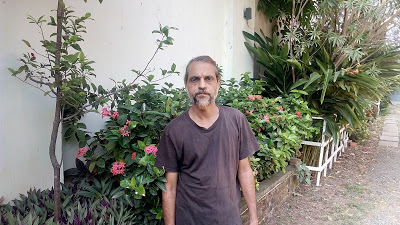
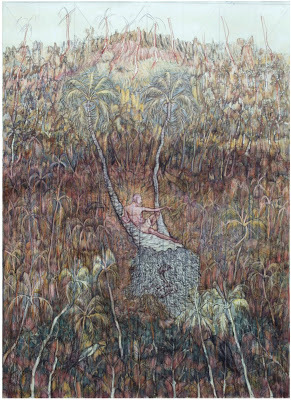
Artist KP Pradeepkumar ponders about the state of society as well as his inner self
Photos: KP Pradeepkumar; 'Creation of Adam'
By Shevlin Sebastian
Three years ago, senior artist KP Pradeepkumar was standing at Kurla station in Mumbai waiting for the train to Kochi. Then he heard, through the public address system that the train would be delayed by a few hours. As Pradeepkumar was wondering how to pass the time, he accidentally met Samuel Isaac (name changed), a 26-year-old Jew from Israel.
“He was doing research on Indian philosophy at Jaipur National University,” he says. “Samuel had travelled a lot. And he spoke about the sense of dislocation that he felt. He was also confused about his motherland because of the conflicts and problems in the region. He said his countrymen felt under some sort of a threat.”
Pradeepkumar felt a kinship with Samuel. “He was struggling and so was I as an artist,” says Pradeepkumar. “From birth, we have an existential confusion: Who we are? What we are? Where are we going?”
In fact, they are beguiling paintings. When you keep staring at it, you spot different things. In one painting, 'Creation on Paper' (mix media on paper), right at the centre of the work, two coconut trees seem to be growing almost from the same roots. In the crook at the bottom, there is the naked figure of a man with a pointed finger.
This figure is a depiction of Michalangelo's 'Creation of Adam', a fresco painting which can be seen on the ceiling of the Sistine Chapel at the Vatican. “All around Adam I have put in the local vegetation of Kerala,” says Pradeepkumar. “There is a snake below the man which is symbolic in nature. The snake represents Tantric power, spirituality and religion.” If you peer deeply, there are also birds, crows and insects.
In a similar work, there are several naked man holding hands and standing in a straight line going right across the painting. “They represent the landless people,” says Pradeekumar. “This is the status of the Adivasi tribals in Kerala.”
In another painting, there are numerous birds sitting atop coconut trees, near the seashore. “They have a wonderful and panoramic view, as compared to human beings,” says Pradeepkumar. “So, they are able to see people who come from the sea on ships. The work is also a look at our colonial past, and how external forces come into our land. And we are continually seeing the impact of that.”
One impact can be seen in the paper drawing of a rubber forest. Pradeepkumar had seen these type of forests in the Kattapana and Palakkad areas. Beneath the trees, he has drawn white coffee flowers. “I am giving a hint of the colonial impact through the coffee image,” he says. “Many Britishers had come to Kerala and planted tea and coffee plants in our mountains in Munnar and other places.”
The artist has also drawn several men who are sitting or reclining on the top of trees. “These are the many versions of my self,” he says. Right through the middle there is a brown patch. This was formerly a river which has dried out. “The river resembles culture and civilisation which looks dried out these days,” he says.
In 'Red Terrain', expectedly, to suit the title, Pradeepkumar has painted it in a light red colour. In the image, there are several trees with exposed roots. “I have shown the roots, to give a hint of soil erosion,” he says. “There is also a political reference. The Communist ideology is in decline in Kerala. Nevertheless, whichever party is in power, the people have to pay a price of living in a politically-charged atmosphere.”
(The New Indian Express, Kochi and Thiruvananthapuram)
Published on April 17, 2018 23:38
April 16, 2018
An 'Edible' Education
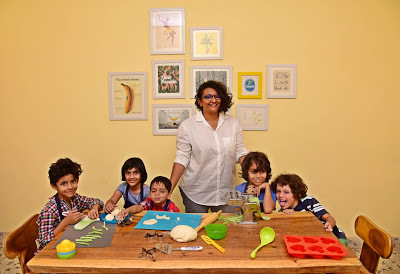
The Kochi-based Sanaa Abdussamad runs 'Kidchen', where children ranging from three to 10 years are taught the joys of cooking
Photo by Albin Mathew
By Shevlin Sebastian
When Sanaa Abdussamad announced to a class of five-year-olds, at Kochi, that she was going to make spinach chips, there was a collective groan. One of them says, “I don’t eat spinach because I don't like the taste.” Many children nodded their heads. Unfazed, Sanaa gave them all paint brushes and says, “We will put butter on each spinach.” So the children had to use the brush in a similar way to painting on a piece of paper.
Thereafter, the children sprinkled some herbs and spices like oregano. And each child put it on a baking plate, which was put inside an oven. When it came out, it was like thin crisp paper. “I gave them a tiny flake,” says Sanaa. The children liked it so much that they mobbed Sanaa. “In the end, we made four batches, so that the children could take some home,” she says.
Sanaa runs 'Kidchen' or Kids' Kitchen. This is an introduction for children, aged three to 10, to the joys of cooking. And, she imparts the kitchen skills of chopping, baking, whipping, and folding.
They make all kinds of food, like bread, pizzas and burgers. “But it is all prepared in a healthy way,” she says. So when the children make pasta, the dough, which is made by them, consists of vegetables. “Instead of adding colour, we will make a red pasta made of beetroot,” says Sanaa. “Orange pasta is made of pumpkin or carrot.”
Many children ask whether they could make cup cakes. So, instead of sugar, Sanaa uses dates. “So, in the end, they are eating a healthy snack,” she says.
She also teaches them to make eggs, appam and dosa but in a baked version. “I don’t use fire around the kids,” she says. “For boiling, I use the induction stove. The knives we use are nylon. It cuts fruit and vegetables but not skin.”
While the exercise is primarily about food and cooking, through these classes, Sanaa is also teaching subjects like vocabulary. “We don’t use words like 'yummy' or 'yucky',” says Sanaa. “So, when we are tasting something we use words like acidic, pungent, bitter, sour or sweet. The children know that honey and sugar, while they are both sweet, can be described differently. Honey is sticky, while sugar is sweet.”
When three-year-olds bake cookies, Sanaa will give them circular cookie cutters of different dimensions. “And I will tell them to cut one of each size and then stack them in ascending order,” she says. “This is similar to playing with blocks. So, 'Kidchen' is an 'edible' curriculum.”
Sanaa does classes in schools and on weekends, sometimes at her home or in a restaurant. “So far, there has been a lot of positive feedback,” she says.
Indeed, there is. Parent Angeleena Andrews says, “I have two daughters, Isabelle, aged six and Abigail, who is four. They had a blast. They learnt a lot of new things. And they are now more than keen to help me in the kitchen.”
Adds Sanaa: “Moms have told me their children would never eat spinach but have started doing so,” she says. “Many of them have also started eating more vegetables and fruits. I have realised that when it comes to children you just need to present things in an interesting and creative way.”
(Sunday Magazine, The New Indian Express, South India and Delhi)
Published on April 16, 2018 23:38
April 15, 2018
Stepping Away From The Stereotype
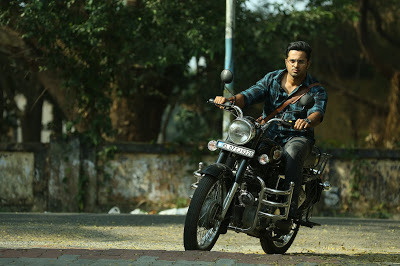
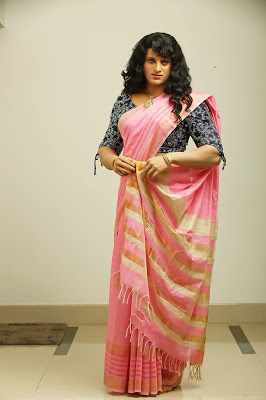
Actor Unni Mukundan talks about his experiences of playing a woman in the Tamil film, 'Chanakya Thanthram'
By Shevlin Sebastian
As Karishma stepped towards an elevator of a building in Kochi, a man standing next to the entrance moved to one side to let her through. He was film art director Sahas.
At the second floor stop, Sahas waited for the woman to step out before he followed. This was noticed by his colleagues as Karishma entered a room. One of them said, “Hey man, didn't you recognise the woman?”
Sahas shook his head. Then one colleague laughed and said, “It's Unni Mukundan.”
“Whaat?” said Sahas.
What indeed? Mollywood actor Unni's makeover as a woman was so complete that Sahas could not recognise her. He plays Karishma in the Tamil film, 'Chanakya Thanthram', directed by Kannan Thamarakulam.
“When the director asked me whether I would play a cameo as a woman I was thrilled and surprised,” says Unni. “It gave me a chance to step out of the stereotype of playing muscular men in films like 'Masterpiece' and 'Mallu Singh'. I am also looking to play a wide variety of roles.”
But the process to get transformed into a woman was not easy. Make-up man Pradeep Rangan shaved off the hair on Unni's chest, arms and legs, as well as his moustache and stubble. “Wax was applied to my body, to get a sheen,” says Unni. “It was very hot. Since I have thick eyebrows, it has to be plucked off. That was very painful. I began to understand the discomfort a woman goes through to look beautiful.”
Thereafter, Unni wore a blouse and saree and put on a black hairpiece. Soon, he began to feel like a woman. “I was immediately reminded of my role in Mallu Singh where I played a Sardarji,” he says. “Once I put on the turban I felt like a Punjabi.”
However, on the sets, he had the strange experience of youngsters ogling him. One of them said, “Sir if you had not been a man, I would have pounced on you.” It was then that Unni understood the statement that he has always heard women tell him, “I didn't like the way he looked at me.”
Asked whether he did any research for the role, Unni says, “I have lived around woman all my life, from my mother to my cousins and relatives. I also believe there is a man in every woman and vice-versa. For example, like a woman, a man can also blush and feel shy.”
Apart from Karishma, Unni plays four characters, but they are all males. “It is a romantic thriller,” says Unni. The film will be released in April.
(The Sunday Magazine, The New Indian Express, South India and Delhi)
Published on April 15, 2018 23:09
April 13, 2018
Shekhar Kapur's Comments Are An Enormous Confidence-Booster: Dileesh Pothan
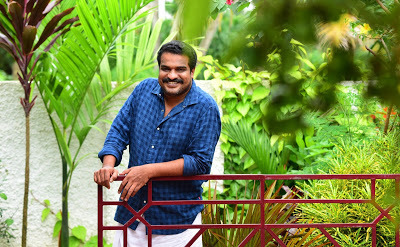
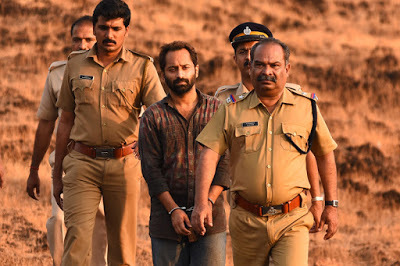
By Shevlin Sebastian
Photos: Dileesh Pothan by Albin Mathew; a scene from 'Thondimuthalum Drikshakshiyum'
On the sets, at Kottayam, of an Amal Neerad film, actor/director Dileesh Pothan watched the live telecast of the National Film Awards on his mobile. His film 'Thondimuthalum Drikshakshiyum' won for Best Malayalam Film, Best Supporting Actor (Fahadh Faasil) and Best Screenplay (Sajeev Pazhoor). “I knew my film was up for awards in a few categories, but who can predict the result?” he said, by phone from Kottayam. “So, it was nice to know it had won so many.”
But Dileesh was taken aback when Jury chairman and acclaimed film-maker Shekhar Kapur spoke at length about his film. “It’s a brilliant film, it’s a beautiful film and brilliant performances, and not only that, it starts you thinking the film is about something… a simple film,” said Shekhar. “It is a love story of a husband and wife, they elope. But she loses a chain in the bus, somebody snatches it off her neck and that chain is expensive and she had left home with that one chain. She goes to the police station. That’s when the chain of events starts. In the end, you are left terrorised.”
A moved Dileesh said, “I am just two movies old. And to think that an eminent filmmaker like Shekhar Kapur spoke so much about my film, it was an enormous confidence-booster for me. It is also a great inspiration. And I will try my best to make my next film better than 'Thondimuthalum'.”
In fact, Dileesh has already started work on the draft of a script. “My method is that when I hear a story and if I like it, then I work closely with the scriptwriter, in this case, it is Syam Pushkaran, to develop it till it reaches a stage where I am satisfied with it,” said Dileesh. “This takes about a year. So I am hoping to start shooting in 2019.”
Meanwhile, not many people will remember that Dileesh's previous film 'Maheshinte Prathikaaram' (2016) also won the 'Best Feature Film in Malayalam' and 'Best Original Screenplay' at last year's national film awards.
And not many people will know that soon after 'Thondimuthalum Drikshakshiyum' was released last year, on June 30, Dileesh received a Whatsapp message, which was forwarded by Fahadh. The message read: “Please congratulate the director for me. Wonderful to see such talent flourishing.” The sender was none other than another critically-acclaimed director Mani Ratnam.
Dileesh Pothan, take a bow!
(The New Indian Express, Kerala editions)
Published on April 13, 2018 23:51
April 12, 2018
A Full-Fledged Fight
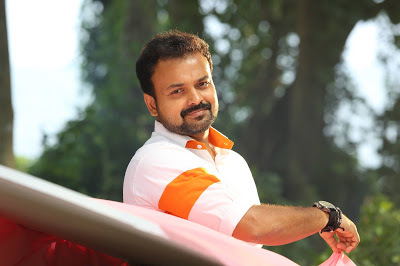
COLUMN: LOCATION DIARY
Actor Kunchacko Boban talks about his experiences in the films, ‘Ordinary’, ‘Traffic’, and 'Kochavva Paulo Ayyappa Coelho'
By Shevlin Sebastian
For the film, 'Ordinary' (2012), the song, 'Sun Sun Sundari' was being picturised inside a bus at Kuttikanam. Actors Kunchacko Boban, Biju Menon and Shrithi Sivadas were present. It was a Sunday evening. Suddenly, a group of men came to the set in a Wagon R. They were drunk and in a combative mood. They passed some mocking comments and stood in front of the camera. Then, suddenly, one of them slapped a member of the crew. Then they laughed and moved away.
“We lost our mood,” says Kunchacko, at his home in Kochi. “So, we decided to end the day's shoot.”
As the crew was packing up, the drunken men appeared again. For the second time they slapped a member of the crew.
That was the last straw. Soon, there was a full-fledged fight. “The unit hands are strong boys because they carry such heavy weights on the sets each day,” says Kunchacko.
In the end, the Wagon R was completely destroyed. The windscreen, as well as the window panes was shattered. There were huge dents on the bonnet.
Soon, the cops arrived and arrested the whole lot. Later, the police filed a case.
And this case is still going on. “Funnily enough, since they have met so often at the court, the two groups have become friends,” says Kunchacko. “In fact, they attend each other's weddings now.”
But Kunchacko had an entirely different experience while filming for the late Rajesh Pillai's 'Traffic' (2010). While Kunchacko played Dr. Abel, Sreenivasan donned the role of constable Sudevan, and Asif Ali played an accident survivor. All three are transporting a heart at high speed from Kochi to Palakkad to save a superstar's daughter's life.
On the first day of the shoot, inside the Fertilisers and Chemicals Travancore Limited campus at Kochi, Kunchacko sat at the back of a Scorpio, Sreenivasan was behind the wheel and Asif remained in the passenger seat.
As Sreenivasan started the vehicle, Kunchacko casually said, “Chettan, do you know driving?”
“No,” said Sreenivasan.
Kunchacko said, “You are joking?”
Sreenivasan immediately said, “No I am not.” Asif and Kunchacko exchanged worried looks. Throughout the film, Sreenivasan was supposed to drive the vehicle, and, that too, at high speed.
Kunchacko said, “Aren't you afraid?”
Sreenivasan said, “Why should I be? You should be since I am the driver.”
So, this was how the shoot panned out. If they were to travel 50 metres, the moment the director shouted, 'Cut”, Asif would immediately shift the gear to neutral, while Kunchacko would lean forward and quickly pull the hand brake. “However, many shots were taken by placing the car on the bed of the trailer which then moved forward,” says Kunchacko. “Thankfully, there were no accidents.”
But there was an accident on the sets of 'Kochavva Paulo Ayyappa Coelho' (2016) at Adimali. For the song sequence of 'Neelakkannula Maane', Kunchacko was supposed to ride down a sloping road on a cycle.
As soon as Kunchacko set out, and the cycle gathered speed, he felt that something was wrong. He quickly pressed the brakes, and realised, with a rising alarm, that they were not working.
He shouted, “Stop me, the brakes are not working.”
A crew member tried but could not stop the cycle.
At the bottom of the slope, the road turned to the left and the right. On the right there was the camera, director and crew members, a tent where the monitor was kept and a crane. On the left was a crowd of people who had come to watch the shoot.
“If I went right I would hit the crane and hurt myself,” says Kunchacko. “If I went left I would hit some people and cause injuries. I had to make a decision within a split second.”And right at the bottom in the middle there was a thick tree. “I felt my only option was to hit the tree,” he says.
When the cycle hit the tree, Kunchacko held up his elbow to protect his head, and so his arm hit the tree with great force. But he also hit the side of his head, near the ear, and fell down.The cycle was destroyed. “By the grace of God, nothing happened to me,” he says. “I told the crew members who wanted to call a doctor that I can hear you speak, I can see clearly and remember everything'.”
In the end, Kunchacko went to his caravan and lay down for half an hour. Thereafter, the shoot resumed once again. A doctor arrived later, checked on Kunchacko, and confirmed that everything was fine. Says a smiling Kunchacko: “You need a large dose of luck whenever you are taking part in a shoot.”
(The New Indian Express, Kochi, Thiruvananthapuram and Kozhikode)
Published on April 12, 2018 04:55
April 11, 2018
Going Dog-Sledding In The Snow
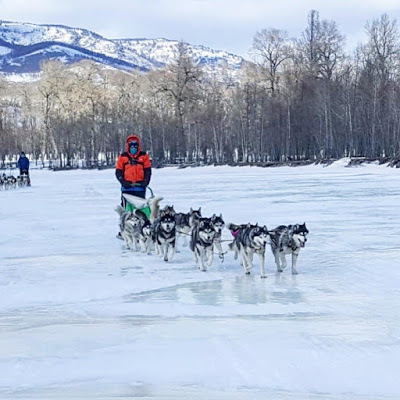
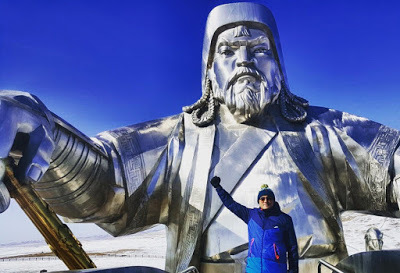
The Kochi-based businessman Balram Menon talks about his experiences in Mongolia. On an average, the country receives only five Indian tourists in a year
Photos: Balram Menon going dog-sledding; the statue of Genghis Khan
By Shevlin Sebastian
The ten Siberian huskies began barking in unison as Balram Menon stepped onto the sled. The time: 10.30 a.m. The place: Gorkhi-Terelj National Park at Mongolia. They set off. On all sides, there was snow and bare brown trees. The temperature was minus 20 degrees even though it was the month of March. Soon, the dogs picked up speed.
The Kochi-based businessman felt thrilled, as they raced through the snowy expanse. “There is a handle which could be used to apply the brakes and control the sledge,” says Balram.
A kilometre ahead was a man inside a jeep. “His job was to keep control of the dogs,” says Balram. “If they see some animals they will get distracted and try to attack them. So, he blows the horn and removes the animals from the path. The Huskies are ferocious dogs but they have been trained to be friendly with human beings.”
Suddenly, the sled hit a rock hidden under the snow and Balram went flying. He had a soft landing on the snow. So he got up quickly and chased the sled and managed to get on.
After an hour came the lunch break. A barbeque was lit and meat fried. “I was feeling so hungry the food was welcome,” says Balram. In the end, he traversed 28 kms before the journey came to an end.
Balram got interested in going to Mongolia when he saw a dog-sled video on Facebook. The page belonged to a man called Bold Purvedelgar from Mongolia. So Balram contacted Bold. “He is one of the few Mongolians who can speak English,” says Balram. “He told me to come to Mongolia and would arrange everything.”
Asked about the temperature, Bold said that it varied from -20 to -40 degrees Centigrade. “He asked whether I could cope with that,” says Balram. “I told him I was prepared for the challenge.”
In the end, Balram had to wear five layers of thermal clothing.
As for the route, since there is no direct flight from Kochi to Mongolia, Balram flew to Colombo. From there, he went to Bangkok, Beijing and then to Mongolia. “It took around 18 hours,” he says.
Apart from dog sledding, Balram tried paragliding. This was at Tsaonjin Boldog Province, around 100km from the country's capital Ulaanbaatar. “We had to walk up a mountain and then run on a flat ground and leap into the air,” he says. “It was very exciting.”
Another highlight was visiting the huge statue of Genghis Khan (1162-1227), the founder of the Mongol Empire at Tsaonjin Boldog. “It is the world's tallest equestrian statue,” says Balram. “The horse is 120 feet high. The statue is made of stainless steel.”
Genghis is regarded as the father of the nation. “While the rest of the world thinks he was a terror, for the Mongolians he is a hero,” says Balram. “He had the largest army in the world and conquered large areas of Asia and Europe.”
Genghis was following a religion called Shamanism, through which you interact with spirits. “Before embarking on a war, he would communicate with the spirits, so that he would get an idea of whether he can win the war or not,” says Balram. “But after the conquest of Mongolia by Russia (1921-24), shamanism was completely destroyed.”
But the traditional food and culture survive. Balram stayed in a tent, called Ger, which is made of horse skin and hair. “It offers a good protection against the cold,” says Balram. “They have small ovens and use horse dung for fire. But there is no electricity, no digital communications and no bathrooms. You have to go out into the forest to do your ablutions.”
The food is unique and different. The staple food is steam dumplings. During winter, they have meat products, so that they can feel warm. And in summer it is cheese. There is also a national drink called airag, which is made from the fermented milk of a mare. “It is highly alcoholic in content,” says Balram. “One sip is enough to send you floating.”
As for the attitude of the people towards Indians, Balram says, “They are very friendly. They feel an affinity because the people of the North-East of India look like them.”
(The New Indian Express, Kochi and Thiruvananthapuram)
Published on April 11, 2018 01:36
April 6, 2018
Making Another Stab For Glory
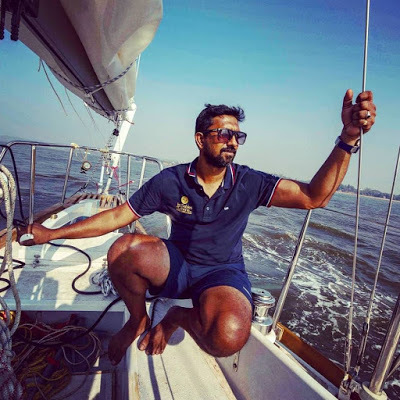
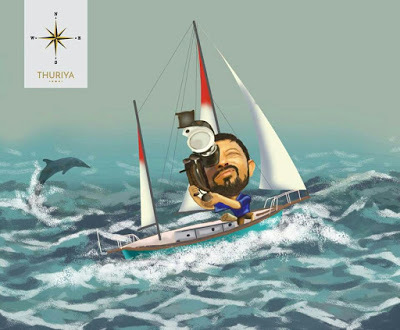
On July 1, Commander Abhilash Tomy of the Indian Navy will take part in the prestigious Golden Global Race, a solo non-stop event around the world, which has 19 top-class participants. He talks about his new boat and the training preparations
By Shevlin Sebastian
One night, recently, Commander Abhilash Tomy of the Indian Navy set out on his new boat from Goa. He was on his way to Karwar, Karnataka. Very soon into the journey, Abhilash realised that he had forgotten to take a torch. As a result, in the enveloping darkness, he could not use a compass or the auto pilot. He drifted for hours. It was only when the sun came up that he could figure out where he was. Amazingly, he had been on the right track all along.
This was a training run in preparation for the Golden Global Race, which will start on July 1 from Les Sables-d'Olonne, a seaside town in France. He is one of three special invitees to take part. The other two are Nabil Amra from Palestine and a Turk, Ertan Beskardes, who is representing Britain. The other 16 sailors are from countries like UK, USA, France, Australia, Netherlands, Finland and Norway.
The race is a recreation on the 50th anniversary of Sir Robin Knox-Johnston’s solo non-stop around the world during the Golden Globe Race in 1968.
Asked about the route, Abhilash says, “From Les Sables-d'Olonne, we will cross the Canary Islands, the South Atlantic, then go around the Cape of Good Hope, and onto the Indian Ocean. From there we will go past Australia, Tasmania, New Zealand and the Pacific Ocean, to Cape Horn and then sail up the North Atlantic and finish in Les Sables-d'Olonne.”
The distance travelled will be 55,000 kms and it will take around nine months. Abhilash plans to do about 200 kms a day. What is going to make it difficult is that the sailors will not be able to make use of any technology invented after 1968. So out goes the Global Positioning System, electronic or digital equipment, calculators or satellite-based navigation aids.
So, these days, the 39-year-old is busy navigating using the sun and the stars. “You have to find out the exact angle of the sun and the moon, using spherical trigonometry and logarithm tables,” he says.
To be mentally prepared, he is also doing a lot of meditation, especially the Shambhavi Mudra. This involves gazing at the centre of the eyebrows which allows one to still the mind and experience higher stages of consciousness. “It makes you calm,” says Abhilash. “You no longer react to a situation. Instead, you can view it dispassionately. This will enable you to make the right decisions.”
Having a spiritual bent of mind, it is no surprise that Abhilash's boat is called the Thuriya. “It is a Sanskrit word which means the fourth stage of consciousness,” he says.
As for the boat, it is 32 feet in length, with a width of 10 ½ feet. It is a replica of Sir Robin’s boat and has been made by the Aquarius Shipyard in Goa at a cost of Rs 2.6 crore. Abhilash will need a further Rs 1.5 crore for expenses connected with the race.
Not surprisingly, he has been on the search for sponsors. “So far, the Goa Shipyard Ltd. and Mazgaon Dock Shipbuilders Ltd. have agreed to be sponsors,” he says. “I am in discussions with the Cochin Shipyard and also looking for corporate sponsors.” The Navy has already sanctioned a year's paid leave.
Asked about the key to success in the race, Abhilash says, “Normally, in any race, the fastest guy will win. But since this race will go on for 300 days, the sailor who will perform consistently and avoid unnecessary risks will win. The qualities needed are cautiousness, perseverance, tenacity and a calm mind, especially when there is pressure.”
What will be an enormous confidence-booster is that Abhilash did something similar four years ago. He became the first Indian to complete a non-stop solo circumnavigation of the globe in a boat with sails. “That experience will be a huge plus for me at the back of my mind,” says Abhilash.
Interestingly, so far, less than 100 people have sailed the globe solo and non-stop. So Abhilash is already in rare company. And come July, Abhilash will take part in a race that will be watched keenly by the sailing fraternity all over the world. A chance to make history is beckoning.
“I will try my best,” he says.
(The New Indian Express, Kochi, Thiruvananthapuram and Kozhikode)
Published on April 06, 2018 23:00



